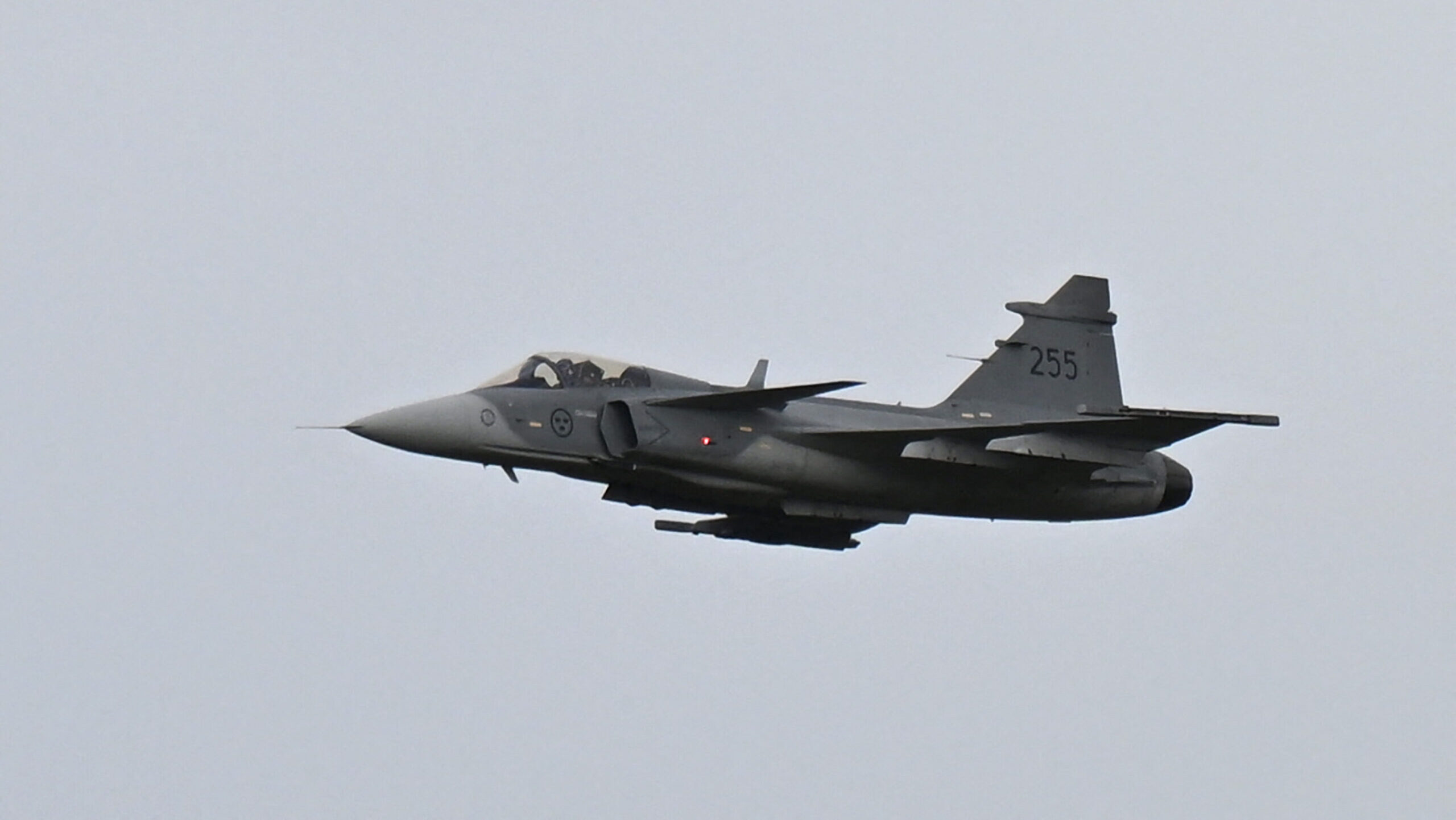World
Ukraine Chooses Gripen Fighters: A Strategic Shift in Air Power

Ukraine’s Air Force (PSU) made a significant announcement this week regarding its future air capabilities, confirming plans to acquire between 120 and 150 Swedish-made Saab JAS-39E Gripen fighter jets. This decision came as a surprise, especially since just a month prior, Sweden’s defense minister noted that any agreement would require a “long-term” negotiation process. While the acquisition has generated excitement, the Gripens are not expected to be operational over Ukrainian airspace for several years.
Several factors influenced Ukraine’s decision to select the Gripen, particularly as the PSU currently operates older French and US jets, such as the F-16 and Mirage 2000. The Gripen’s modern features provide a better fit for Ukraine’s evolving military requirements, particularly given the current context of the ongoing conflict with Russia.
Understanding the Need for Modern Air Power
The operational landscape since Russia’s invasion of Ukraine in February 2022 has dramatically shaped the air combat environment. Initially, the Russian Aerospace Forces (VKS) aimed to gain air superiority through a strategy focused on Suppression of Enemy Air Defenses (SEAD). However, Russian forces soon faced significant challenges, including substantial losses inflicted by Ukrainian forces, leading to a reassessment of their combat strategy.
By early April 2022, the VKS struggled to penetrate Ukrainian airspace effectively. Philip Breedlove, a former Supreme Allied Commander in Europe, highlighted at the Warsaw Security Forum in October 2022 that organizational and training deficiencies hampered the Russian air campaign. Following early setbacks, the VKS shifted focus, often targeting civilian areas and infrastructure rather than engaging in direct air-to-air combat.
In contrast, the PSU has employed a robust strategy of dispersed operations. This approach, rooted in Soviet military doctrine, allows for the evacuation of aircraft from fixed bases to unimproved airstrips, minimizing vulnerability to attacks. This agility in operational deployment has been crucial for the PSU as it adapts to the ongoing conflict.
The Gripen’s Advantages and Challenges
The decision to opt for the Gripen aligns well with Ukraine’s operational needs. The Gripen is uniquely designed for dispersed operations, making it an ideal choice for a military accustomed to operating in such an environment. Reports indicate that the Gripen E achieves over 85 percent availability with optimal support, a crucial factor for sustaining operations in a conflict zone.
Cost considerations also played a role in the selection process. The Gripen’s smaller size and single-engine design make it less expensive to procure compared to multi-engine fighters like the Eurofighter or Rafale. Additionally, the Gripen’s operational cost per flight hour is approximately $8,000, with potential reductions depending on usage.
Sweden’s government has committed to delivering the first Gripens within three years, a timeline that is likely more favorable compared to other available options. This speed could be vital for supporting Ukraine’s military objectives as the conflict continues.
Moreover, the Gripen E is engineered with advanced electronic warfare (EW) capabilities, which are increasingly relevant in modern combat scenarios. The aircraft’s EW system employs multiple signal generation techniques to confuse adversaries and enhance survivability, underscoring its suitability for Ukraine’s needs.
However, integrating the Gripen into the PSU’s existing framework will not be without challenges. The introduction of a new fighter jet necessitates not only operational adjustments but also significant changes to air bases and support infrastructure. Training programs will need to be developed for pilots to effectively utilize the Gripen’s advanced systems, including its Active Electronically-Scanning Array (AESA) radar and sophisticated EW suite.
Despite these challenges, the PSU has already begun preparations by training pilots on the Gripen, which could facilitate a smoother transition once the aircraft are delivered. Yurii Ihnat, head of communications for the PSU, noted that a select group of pilots is already familiar with the Gripen, potentially allowing for a quicker operational readiness.
As the PSU prepares to incorporate the Gripen into its fleet, it is essential to consider how this shift will reshape Ukraine’s air strategy. The Gripen will enable the PSU to transition from a primarily defensive posture to more offensive operations, thereby expanding its tactical options against Russian air defenses.
While the timeline for acquiring the Gripens presents a delay, it also allows the PSU to address critical training and operational challenges. The Gripen’s entry into service heralds a substantial enhancement in Ukraine’s air capabilities, promising a new era of air power that could reshape the dynamics of the ongoing conflict.
-

 Science2 weeks ago
Science2 weeks agoIROS 2025 to Showcase Cutting-Edge Robotics Innovations in China
-

 Politics2 weeks ago
Politics2 weeks agoJudge Considers Dismissal of Chelsea Housing Case Citing AI Flaws
-

 World2 weeks ago
World2 weeks agoBravo Company Veterans Honored with Bronze Medals After 56 Years
-

 Top Stories2 weeks ago
Top Stories2 weeks agoIndonesia Suspends 27,000 Bank Accounts in Online Gambling Crackdown
-

 Lifestyle2 weeks ago
Lifestyle2 weeks agoStone Island’s Logo Worn by Extremists Sparks Brand Dilemma
-

 Sports2 weeks ago
Sports2 weeks agoMel Kiper Jr. Reveals Top 25 Prospects for 2026 NFL Draft
-

 World2 weeks ago
World2 weeks agoHoneywell Predicts Record Demand for Business Jets Over Next Decade
-

 Health2 weeks ago
Health2 weeks agoStartup Liberate Bio Secures $31 Million for Next-Gen Therapies
-

 Politics2 weeks ago
Politics2 weeks agoNew Jersey Voters Urged to Register Ahead of November Election
-

 Health2 weeks ago
Health2 weeks agoTop Hyaluronic Acid Serums for Radiant Skin in 2025
-

 Lifestyle2 weeks ago
Lifestyle2 weeks agoMary Morgan Jackson Crowned Little Miss National Peanut Festival 2025
-

 Sports2 weeks ago
Sports2 weeks agoYamamoto’s Mastery Leads Dodgers to 5-1 Victory in NLCS Game 2








